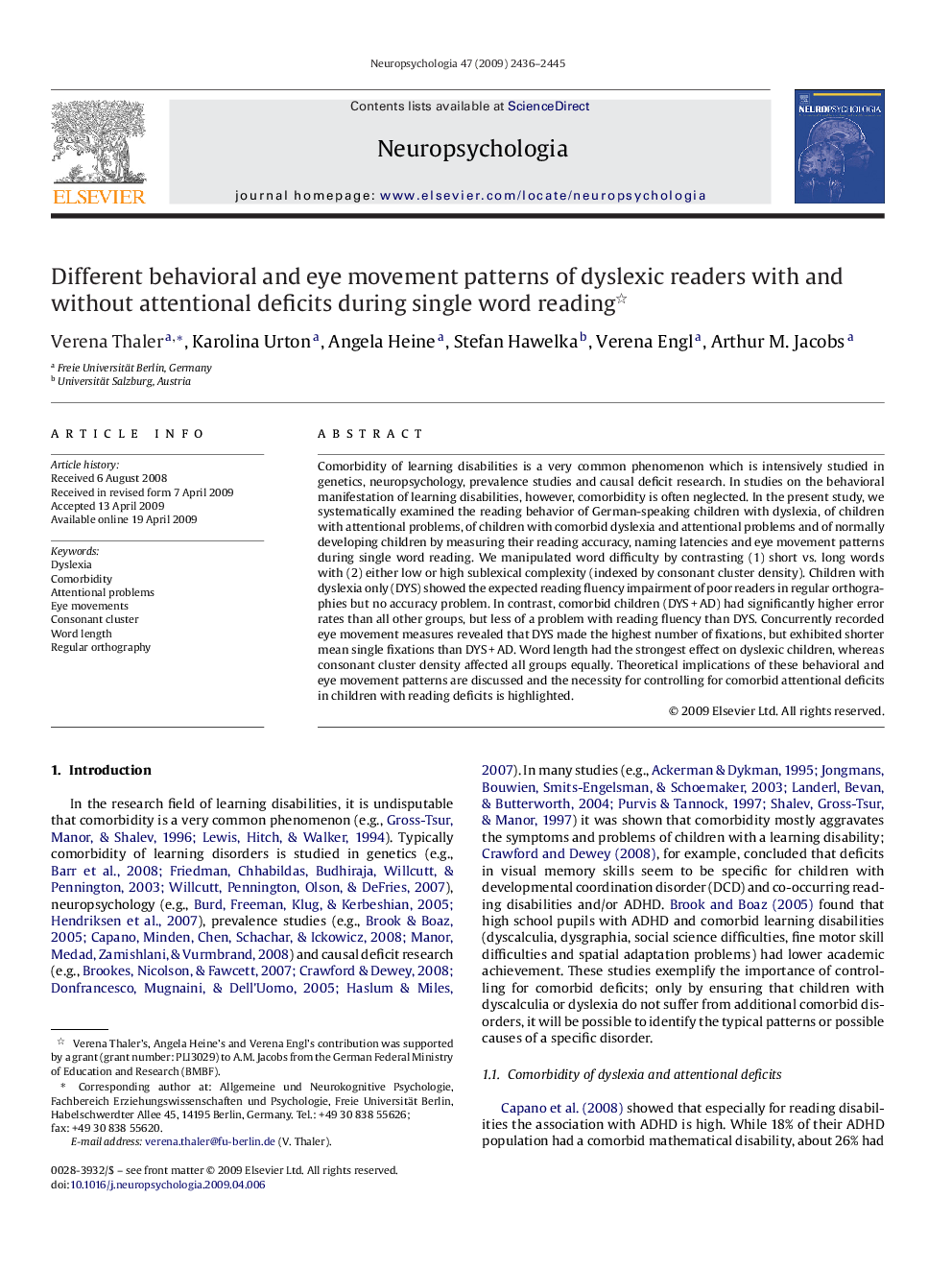| Article ID | Journal | Published Year | Pages | File Type |
|---|---|---|---|---|
| 945066 | Neuropsychologia | 2009 | 10 Pages |
Comorbidity of learning disabilities is a very common phenomenon which is intensively studied in genetics, neuropsychology, prevalence studies and causal deficit research. In studies on the behavioral manifestation of learning disabilities, however, comorbidity is often neglected. In the present study, we systematically examined the reading behavior of German-speaking children with dyslexia, of children with attentional problems, of children with comorbid dyslexia and attentional problems and of normally developing children by measuring their reading accuracy, naming latencies and eye movement patterns during single word reading. We manipulated word difficulty by contrasting (1) short vs. long words with (2) either low or high sublexical complexity (indexed by consonant cluster density). Children with dyslexia only (DYS) showed the expected reading fluency impairment of poor readers in regular orthographies but no accuracy problem. In contrast, comorbid children (DYS + AD) had significantly higher error rates than all other groups, but less of a problem with reading fluency than DYS. Concurrently recorded eye movement measures revealed that DYS made the highest number of fixations, but exhibited shorter mean single fixations than DYS + AD. Word length had the strongest effect on dyslexic children, whereas consonant cluster density affected all groups equally. Theoretical implications of these behavioral and eye movement patterns are discussed and the necessity for controlling for comorbid attentional deficits in children with reading deficits is highlighted.
